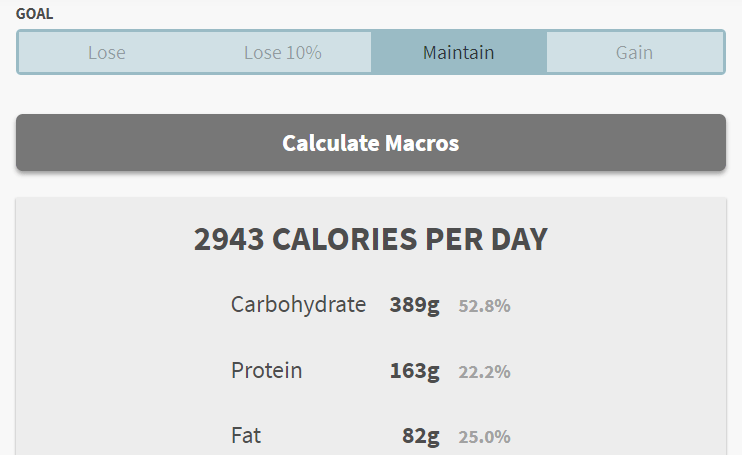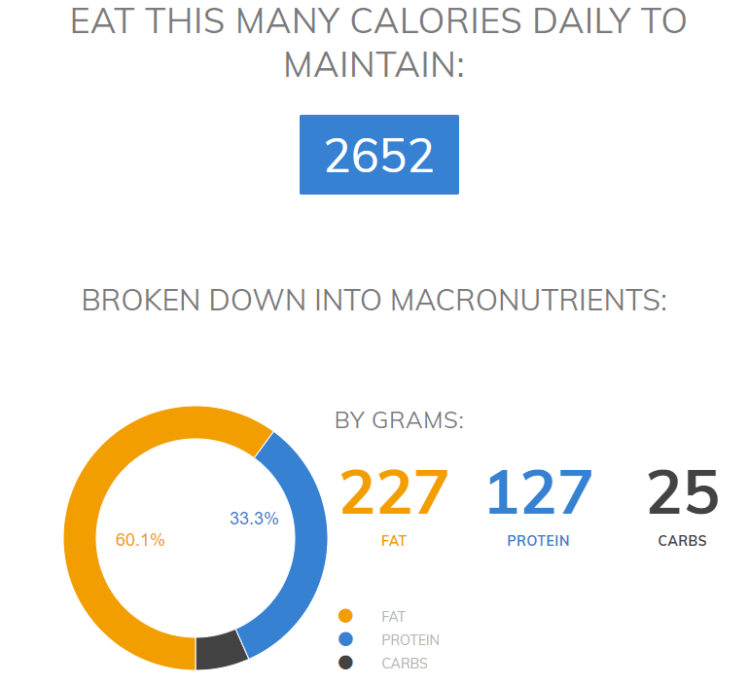If you’ve done any reading about dieting and fitness, you’ve come across the term “macros.” What are these pervasive concepts and why do they matter?
Macros are short for “macronutrients,” and the dictionary defines them as “any of the nutritional components of the diet that are required in relatively large amounts: protein, carbohydrates, and fat.” These are the major food components, and the ratio you need is primarily determined by your health and the goals you have for your body.
The typical Western approach to nutrient ratios places a high emphasis on carbs, followed by protein and fat. This macros calculator, for example, estimated the relative amounts I’d need of each as ~53 percent carbs, ~22 percent protein, and 25 percent fat if I wanted to maintain my current body weight.

Why the ratios?
The USDA published the Food Guide Pyramid in 1992 in an effort to guide people to make better nutrition choices. Unfortunately, this pyramid was based on quite a bit of flawed research and demonized fat, placing a high priority on carbs. For example, the USDA recommended eating 2 to 4 times as much bread and pasta as it did vegetables, and 5 times as much of the processed grains as healthy fats.
As time went on, the implications of these recommendations became clear—and it wasn’t pretty. For example, 2.93 percent of Americans were diagnosed with diabetes the year the Food Guide Pyramid was released; by 2015, that number had increased by two and a half times to 7.40 percent.
This and other similar healthcare issues caused a storm of research. The USDA revised their recommended guidelines in 2005 with a lower emphasis on carbs, but many critics claim that it still isn’t balanced. Canada, on the other hand, continued with recommendations similar to the 1992 pyramid and their diabetes rate continues to rise: it’s currently at 9.3 percent, and experts estimate that this will increase to 12.1 percent by 2025.
What should a healthy diet look like?
There’s no one-size-fits-all approach to dieting, but nutritional experts are beginning to recognize the role that fat plays in a healthy lifestyle. The ketogenic diet is one of several eating styles that effectively reverse the older guidelines, placing a high emphasis on healthy fats while minimizing the role that carbohydrates play.
This approach has been met with very positive results, and more than 2,000 peer-reviewed studies have been conducted on keto’s effect on everything from weight loss to athletic performance to its impact on diseases like cancer.
Keto ratios look just a bit different from the typical Western approach, as you can imagine. I used the same parameters from the previous macros calculations: here are my results from Tasteaholics’ Keto Calculator.

What happens with keto?
As you can see, the results are vastly different. It shouldn’t surprise you that what happens when you follow keto achieves drastically different outcomes1. For example, one five-year study on the effects of keto on diabetes patients showed that 94 percent of the participants who completed the study were able either able to decrease or completely eliminate their dependence on insulin to manage their conditions, and 60 percent of these participants effectively eliminated their diabetic symptoms completely.
In other words, while following a traditional diet drastically increases your chances of developing diabetes, utilizing a ketogenic diet has the potential to reverse the condition of even diagnosed diabetics.
This is just one example, but there are many more. Check out Tasteaholics‘ and SoNourished’s news sections to get the latest in keto news and information, including reporting on newly-published peer-reviewed studies.
NUTRITIONAL DISCLAIMER
The content on this website should not be taken as medical advice and you should ALWAYS consult with your doctor before starting any diet or exercise program. We provide nutritional data for our recipes as a courtesy to our readers. We use Total Keto Diet app software to calculate the nutrition and we remove fiber and sugar alcohols, like erythritol, from the total carbohydrate count to get to the net carb count, as they do not affect your blood glucose levels. You should independently calculate nutritional information on your own and not rely on our data. The website or content herein is not intended to cure, prevent, diagnose or treat any disease. This website shall not be liable for adverse reactions or any other outcome resulting from the use of recipes or recommendations on the Website or actions you take as a result. Any action you take is strictly at your own risk.
- The Brain’s Role in Weight Loss - March 11, 2019
- Making Fat Loss EPOC - March 8, 2019
- Overcoming Plateaus - March 6, 2019




